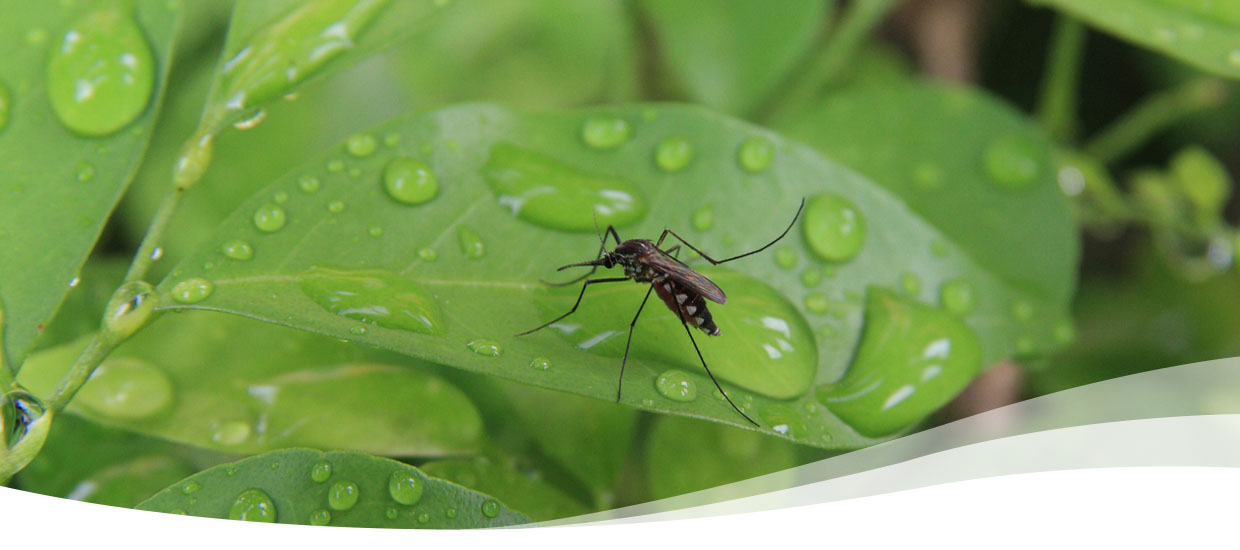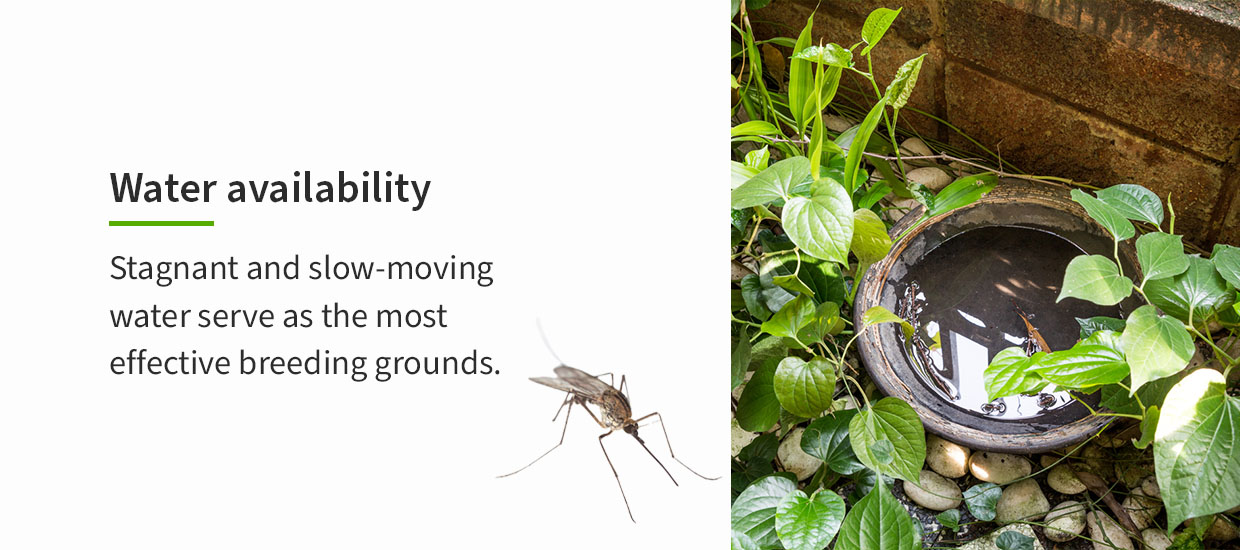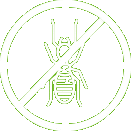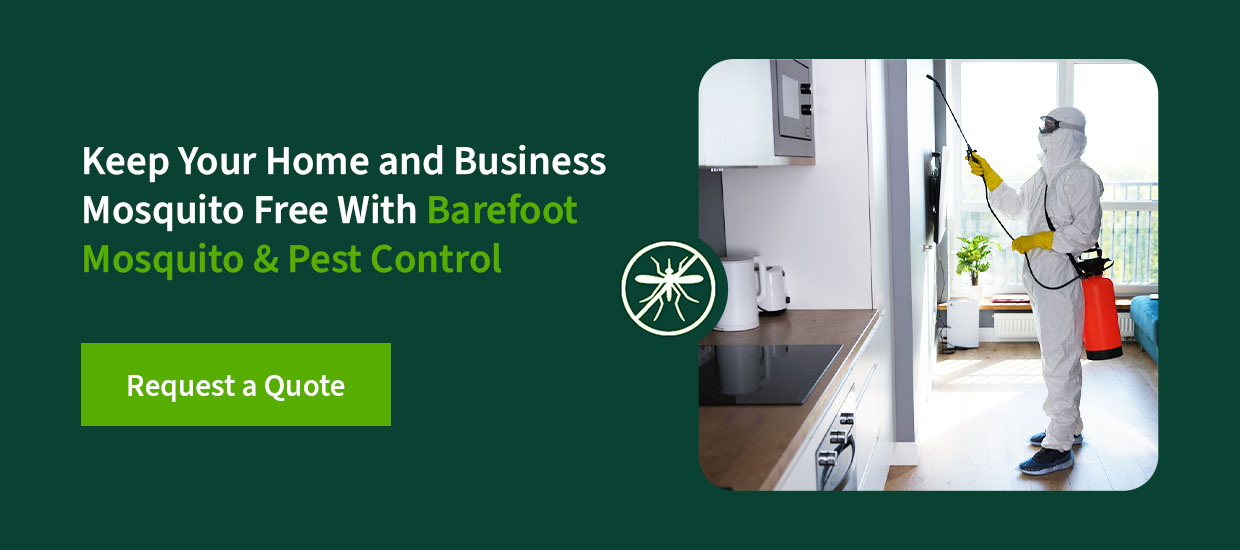The Mosquito Life Cycle

Understanding the secrets of mosquito life cycles is a crucial part of effective pest control. From their resilient eggs to the adults’ stealthy feeding habits, you will learn new ways to control their population by knowing about each life cycle stage. This in-depth analysis of how mosquitoes develop and breed will help you ward off these persistent pests.
The Different Stages of The Mosquito Life Cycle
There are four mosquito development stages. They start as eggs, which hatch into larvae. Larvae develop into pupae before finally maturing into mosquito adults. Mosquitos lead a fascinating life in each stage as they try to survive and grow up to make their own nests. This breakdown will detail each life stage and explore what makes them unique:
1. Eggs
Mosquito eggs are laid on the inner, wet side of the wall of a container filled with water. They will lay the eggs slightly above the waterline on a wet surface. A female will typically lay 100 eggs at a time. These eggs are hardy and survive by sticking to the wall like glue.
The eggs are ready to hatch within a few days to several months after being laid. They can avoid drying out for up to eight months. This survival tactic allows them to thrive in harsh environments and cold winters.
Mosquitoes need as little as a quarter inch of water to lay their eggs. This gives them plenty of opportunities to lay their eggs, like in buckets, fountains, barrels and anything that can hold water. Mosquitos have hundreds of new places to lay their eggs after it rains.
2. Larvae
Larvae emerge from their eggs once the water level rises to cover them completely. Rainwater or water added to their homes by humans will trigger their hatching. They eat microorganisms that reside in the water to grow. After molting three times, a larva will grow into a pupa.
3. Pupae
Mosquito pupae develop their new adult bodies. Once ready, the adults will emerge from the pupal skin and leave the water by flying away. The pupa is the simplest stage of the mosquito’s life cycle. All three stages, from egg to pupa, will take approximately eight to 10 days.
4. Adults
Once they emerge, a mosquito will search for food. Mosquito feeding habits vary based on gender. Male mosquitoes feed on the nectar of flowers and sip juice from nearby fruits. Female mosquitoes feed on the blood of humans and animals. That’s why mosquito habitats are most commonly found around humans, livestock and wild animals. After feeding, female mosquitoes look for water to lay their eggs in. The nutrients they get from blood are used to produce their eggs.
An average mosquito will fly the equivalent of a few city blocks within its entire life, which is typically around two weeks.
Environmental Factors Influencing the Mosquito Life Cycle
These are the varying factors that influence the various life stages of mosquitoes:
- Temperature: Since they are ectothermic, the external environment influences a mosquito’s body temperature. Studies show that warmer temperatures accelerate mosquito’s life cycles. It promotes faster larval development, reducing the time it takes to grow from an egg to an adult.
- Humidity: Humidity plays a pivotal role in a mosquito’s reproduction. The survival of eggs and larvae is much easier in more humid locations. A mosquito habitat with higher humidity levels proves to be a more stable breeding environment.
- Water availability: Suitable water sources are critical to a mosquito’s life cycle because they lay their eggs in water. Stagnant and slow-moving water serve as the most effective breeding grounds. These water sources are better at facilitating the survival and development of mosquito larvae.

- Vegetation: Vegetation is a vital part of a mosquito’s life cycle. More than just resting sites, vegetation provides shelter and influences their habitat preferences. The type and density of vegetation affect mosquito behavior. It impacts their choices of breeding grounds, places to rest and food for males.
- Seasonal changes: Mosquito activity is closely related to the seasonal changes in an area. Regions that experience harsher seasonal changes will experience larger mosquito populations during the warm months. In colder and drier seasons, the mosquito population will decline. Based on where they are, the amount of mosquitoes will fluctuate in places with bigger seasonal changes. In locations where the changes in seasons are less noticeable, there will always be a steady population of mosquitoes.
Mosquito Survival Strategies
Mosquitoes are hardy creatures with many survival tactics to rely on throughout their life stages. These are the most useful survival strategies mosquitoes have at their disposal:
- Egg stage: Mosquito eggs survive so long in dry conditions by remaining dormant. While dormancy brings its fair share of vulnerabilities, it is a viable survival tactic organisms use to endure harsh conditions. By waiting out dry and unfavorable conditions, they can survive until suitable conditions return. Eggs can last up to eight months before drying out.
- Larval stage: Mosquito larvae have specialized breathing tubes called siphons. These tubes allow them to breathe air while submerged under water. This tactic enables them to survive in aquatic environments with varying oxygen levels.
- Pupal stage: Mosquito pupae remain inactive while enclosed in their protective cocoons. This is a transitional stage of their life, so they need this to protect them from predators while in this vulnerable state.
- Adult resting behavior: Adult mosquitoes are known to find resting places and seek shelter. This keeps them safe during non-feeding periods and preserves energy while on the search for food. They find shelter in vegetation and other protected areas during rain and strong winds.
- Flight: Mosquitoes are highly adept fliers. This is how they can disperse many habitats to find food and breeding sites. Flight is a useful survival technique that helps them escape predators and find food quickly.
- Species-specific adaptations: Certain mosquito species have developed unique survival tactics. Some evolved new ways to survive in harsh conditions and specific habitats. Diapause is a form of dormancy that takes place during adverse conditions. This is only present in some species of mosquitoes but has greatly increased their chances of survival.
Keep Your Home and Business Mosquito Free With Barefoot Mosquito & Pest Control
Trust the expertise and techniques we at Barefoot Mosquito & Pest Control use to deal with mosquitoes at every stage of their life cycle. We are the ultimate solution to any mosquito pest problems you may face. To find out more and book a service, you can call us at 512-400-2008 in Austin, 713-554-9430 in Houston or 210-981-3331 in San Antonio. You can also request a free quote from us anytime on our website.

Get Rid of Pests Today!
Our naturally superior pest solutions will protect your home and yard from dangerous and annoying pests. Get started today by calling us or requesting a free quote online!

